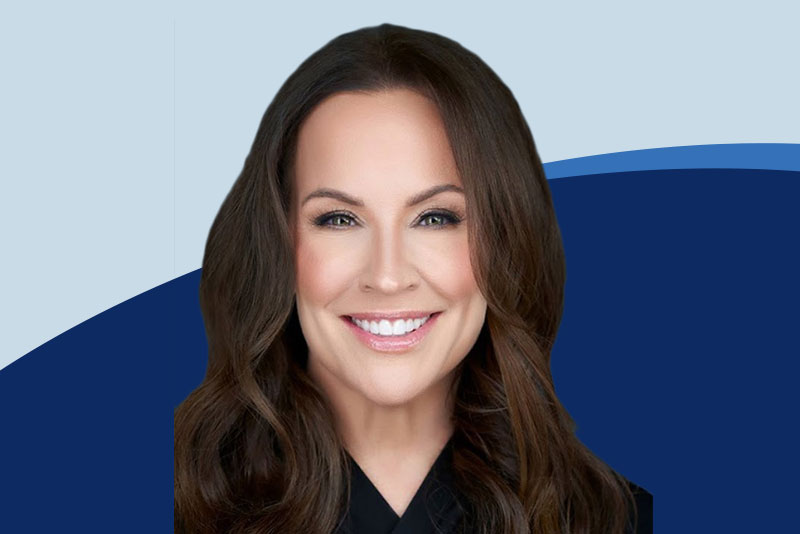Running a dental practice comes with a lot of moving parts. From managing patients to keeping up with paperwork, it’s easy to feel overwhelmed. But what if your software could make things easier? In this episode, we’re joined by Dayna Johnson, a dental software expert who shares how to use systems and technology to build a smoother, more profitable practice.
Dayna didn’t start out as a tech trainer — she began her journey inside a dental office back in the early ‘90s. When her practice finally switched to Dentrix in 2003, she found herself frustrated and almost gave up. But instead of quitting, Dayna dove deep into learning the system. She became a certified trainer and later started helping other practices make the most of their software, too.
In this conversation, Dayna shares how many dental teams still rely on sticky notes, notebooks, or spreadsheets to track important patient info — and how this slows everything down. She explains how a well-set-up practice management system can help eliminate manual work, reduce stress, improve patient care, and even prepare your team to move away from insurance plans. She also talks about the importance of having proper training systems in place so your team members can feel confident and do their best work.
If you’re tired of feeling stuck in old systems… or just want to work smarter, not harder… you’ll love the practical tips Dayna shares in this episode. From training ideas to tech tools, this is your guide to creating a simpler, stronger dental practice — one that’s built to grow, with or without insurance.
Key Takeaways
- Manual systems slow your team down
Dayna explains how sticky notes, notebooks, and whiteboards make things harder. Using your practice software the right way can save time and reduce stress for your whole team.
- Training your team should not be guesswork
Many offices train new hires by word of mouth. Dayna shows why having a clear, step-by-step training plan helps team members feel confident and do a better job.
- Your software can help you move away from insurance
Whether you’re in-network or not, Dayna shares how setting up your software correctly can help you give better treatment estimates and become a strong advocate for your patients.
- Too many tools = too much confusion
When practices use too many platforms for phones, forms, and patient messages, it creates chaos. Dayna talks about keeping things simple by using fewer tools the right way.
Podcast: Play in new window | Download
Subscribe:
Episode Timestamps
- 00:00:00 – Welcome & Introduction
- Michael Walker welcomes listeners and introduces
- Dana Johnson. Dana is a dental software expert with over 30 years of experience helping practices use their systems better.
- 00:03:00 – Dana’s Story: From Dental Team Member to Software Trainer
- Dana shares how she started working in dental offices in 1992.
- She talks about her early struggle with outdated software.
- She became a certified Dentrix trainer to help other practices avoid the same struggles.
- 00:07:00 – Why Systems Matter in Dental Practices
- Dana explains that good systems help practices work smarter, not harder.
- Manual tools like sticky notes, notebooks, and whiteboards slow teams down.
- Software can track everything — no need for paper lists.
- 00:11:00 – How Software Helps Reduce Insurance Dependence
- Proper software setup helps practices give better treatment estimates.
- Software can help track patient benefits and insurance details.
- Even fee-for-service practices should help patients use their benefits.
- 00:15:00 – The Cost of Using Too Many Tools
- Dana talks about practices using 3 or 4 different platforms for phones, forms, and communication.
- Too many tools confuse the team and slow things down.
- Keeping tools simple helps teams work better.
- 00:19:00 – The Importance of Training Your Team
- Most new team members are trained by word of mouth.
- Dana says practices should have a clear training plan.
- Proper training helps new hires feel confident and avoid mistakes.
- 00:24:00 – Common Inefficiencies in Dental Offices
- Tracking patients on sticky notes or in notebooks is a common problem.
- Software can handle ASAP lists, unscheduled patients, and lab cases better.
- Manual systems create extra work for everyone.
- 00:29:00 – Planning to Go Out of Network
- Moving away from insurance needs a clear plan.
- Communication with patients should happen early.
- The practice software must be updated to handle out-of-network billing correctly.
- 00:34:00 – Setting Up Software for Out-of-Network Practices
- Practices need to set up their software based on how they’ll handle payments and insurance checks.
- Dana explains the difference between in-assignment and out-of-assignment setups.
- 00:39:00 – Why the “Why” Matters Most
- Team members are more open to change when they understand why it’s needed.
- Explaining the benefits of change makes people more willing to learn.
Capture a couple of sound bites from this podcast that you can act on immediately. Don’t just plan to review it later—take one step today to change your practice.
Michael Walker
When you’re out of network, patients expect better service and value. Using software to clearly explain their benefits is a value-added service that builds trust and supports them.
Dayna Johnson
Resources
 One of Gary's most significant achievements as a dental practice management coach is transforming his own practice, LifeSmiles, from one that was infected with PPO plans, no effective marketing strategy, and an overhead of 80% to a very successful dental practice that is currently one of the top-performing practices in the US.
One of Gary's most significant achievements as a dental practice management coach is transforming his own practice, LifeSmiles, from one that was infected with PPO plans, no effective marketing strategy, and an overhead of 80% to a very successful dental practice that is currently one of the top-performing practices in the US.
 As CEO of Ekwa Marketing, Naren has over a decade of experience working with dental practices and helping them attract the ideal type of patients to their practices. It is his goal to help dentists do more of the type of dentistry they love with the help and support of effective digital marketing.
As CEO of Ekwa Marketing, Naren has over a decade of experience working with dental practices and helping them attract the ideal type of patients to their practices. It is his goal to help dentists do more of the type of dentistry they love with the help and support of effective digital marketing.


